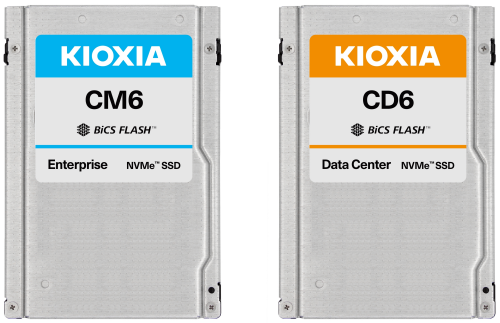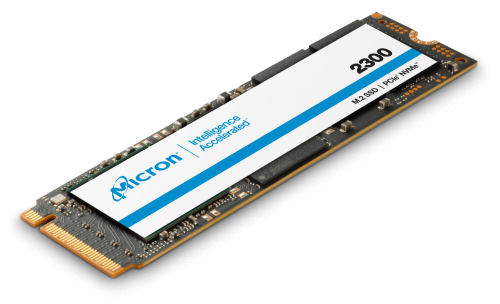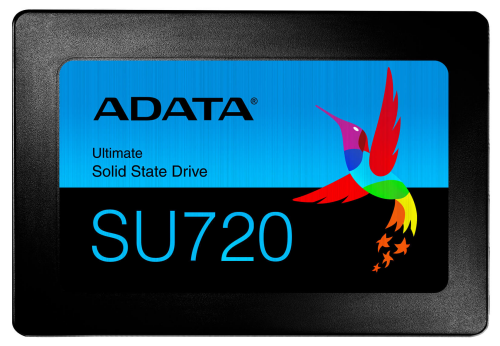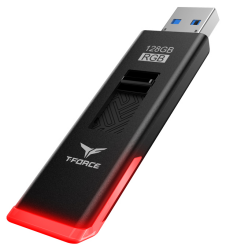- Details
- Flash Memory
From introducing game-changing new technologies to being the first to deliver PCIe 4.0 U.3 SSDs, KIOXIA America, Inc. (formerly Toshiba Memory America, Inc.), continues to demonstrate its commitment to delivering cutting-edge flash solutions. This dedication will be on full display at this week’s Open Compute Project (OCP) Virtual Summit and Future Technologies Symposium, where KIOXIA will showcase its data center and enterprise solid state drive (SSD) portfolio. At the Summit, KIOXIA will highlight its CM6 and CD6 Series PCIe 4.0 NVMe enterprise and data center SSDs, KumoScale storage software based on NVM Express over Fabrics (NVMe-oF) and a new Software-Enabled Flash (SEF) technology that redefines digital storage.

KIOXIA has the broadest portfolio of SSDs in the market, including SSDs for client PCs, data center, hyperscale, high-end servers and storage systems.
Add a comment- Details
- Flash Memory
 Samsung announced today in an OCP Virtual Summit keynote that it has developed a solid state drive (PM9A3 SSD) with a SNIA-based E1.S form factor and full PCIe Gen 4 support to harness the production efficiencies of the company’s sixth-generation (1xx-layer), three-bit V-NAND. At the same time, the company said that it has introduced a comprehensive reference design for its E1.S-based storage system.
Samsung announced today in an OCP Virtual Summit keynote that it has developed a solid state drive (PM9A3 SSD) with a SNIA-based E1.S form factor and full PCIe Gen 4 support to harness the production efficiencies of the company’s sixth-generation (1xx-layer), three-bit V-NAND. At the same time, the company said that it has introduced a comprehensive reference design for its E1.S-based storage system.
The keynote, in addition to announcing the PM9A3, highlighted a new approach to open source multi-industry storage collaboration that spotlighted the development of an open-source platform (OSP) fundamentally tied to cloud-scale infrastructure deployments. It was presented by Jongyoul Lee, senior vice president of Samsung’s Memory Software Development Team at the Open Compute Project Virtual Global Summit.
“Offering the most 1U server-optimized form-factor, the PM9A3 will improve space utilization, add PCIe Gen4 speeds, enable increased capacity and more,” said Mr. Lee. “We see it eventually becoming the most sought-after storage solution on the market for tier one and tier two cloud datacenter servers, and one of the more cost-effective,” he added.
Add a comment- Details
- Flash Memory
Micron Technology, Inc., today announced new client solid-state drives (SSDs) that bring NVMe performance to client computing applications, freeing laptops, workstations and other portables from legacy architectures that can rob devices of battery power, performance and productivity. The Micron 2300 SSD combines the power and density needed to drive compute-heavy applications in a compact form factor with the reduced power consumption modern mobile users demand. For the first time, Micron brings together NVMe performance and low-cost quad-level-cell (QLC) NAND in the Micron 2210 QLC SSD. It combines fast NVMe throughput and Micron’s leadership in QLC technology to offer flash capabilities at hard disk drive-like price points while reducing power consumption by 15 times when compared to hard drives.

“Ninety percent of client platforms will ship NVMe SSDs within the next year, and the market is fast bifurcating into mainstream and value market segments," said Roger Peene, vice president of marketing, Storage Business Unit, Micron. "Our two new client SSDs, the 2300 and 2210, are optimized for each segment. The 2300 offers outstanding power performance, while the 2210 delivers compelling price performance by using Micron's industry-leading QLC NAND.”
Add a comment- Details
- Flash Memory
ADATA Technology, a leading manufacturer of high-performance DRAM modules and NAND Flash products, today announces the launch of the ADATA Ultimate SU720 SATA 6Gb/s solid state drive (SSD). An ideal offering for those looking to make the switch to SSDs, the SU720 offers great performance and reliability at an amazing value. Equipped with 3D NAND memory and intelligent SLC caching, the SU720 reaches read/write speeds of up to 520/450MB per second.

High Capacity. Very Durable. Fast Transmission Speeds.
Implementing advanced 3D NAND Flash, the SU720 features high storage capacities of 5000GB to 1TB, improved efficiency, and rugged reliability with better cost-performance ratios than ever. The SU720 also features continuous read/write speeds of up to 520/450MB per second and supports SLC caching. The SU720 sports data protection and error correction technologies for high endurance and delivers random read/write performance of up to 50K/65K per second, which is up to 2.5 times faster than standard hard drives.
- Details
- Network Storage
QNAP Systems, Inc., a leading computing, networking, and storage solution innovator, today introduced the new dual-core 2.0 GHz short depth rackmount 4-bay NAS – TS-451DeU. Featuring a compact 1U 12-inch-depth chassis that allows easy installation in small media cabinets or places with a lot of cabling, the TS-451DeU provides dual 2.5GbE ports, two M.2 2280 SATA 6 Gb/s SSD slots, storage scalability, and highly-anticipated business and media features. The TS-451DeU is an ideal cost-effective entry-level rackmount NAS.

“The TS-451DeU presents a modern 2.5GbE NAS solution for businesses to tackle everyday tasks like file backup/restore, and to boost team collaboration with higher productivity,” said Jason Hsu, Product Manager of QNAP, adding “As the short depth design is suited for media cabinets, the TS-451DeU is also an ideal multimedia server with the support of video streaming and transcoding.”
Add a comment- Details
- Flash Memory
Organizations around the world trust their sensitive data to Kanguru Defender Hardware Encrypted Flash Drives for their flexibility, mobility, and security. Kanguru expands on the Defender family with new 256GB high-capacity drives to help security-conscious organizations get the most out of their investment.

With new 256GB capacities on Kanguru Defender hardware encrypted USB flash drives, users can freely load enormous amounts of information on a single drive, without the worry of sensitive data getting into the wrong hands. Defender encrypted flash drives maintain the highest military-grade standards for secure data storage, with AES-XTS 256-Bit hardware encryption, FIPS 140-2 Certification, remote management capability, digitally-signed secure firmware and tamper-proof protection.
Add a comment- Details
- Network Storage
QNAP Systems, Inc., a leading computing, networking and storage solution innovator, today launched the quad-core TS-x31K series NAS (including 1-bay, 2-bay and 4-bay models) that provides centralized data backup and management, easy file access and sharing, feature-rich multimedia applications and secure Snapshots protection. Featuring a compact pure white minimalist design, the TS-x31K blends in with any home décor and takes up very little space, making it an ideal solution for home users to build reliable private cloud storage.

The TS-x31K series is powered by a quad-core 1.7 GHz processor for exceptional home performance. With 1 GB RAM, Gigabit LAN (1-bay: one GbE port; 2-bay and 4-bay: two GbE ports), SATA 6 Gb/s, and AES-256 bit encryption, the TS-x31K delivers fast and stable connectivity. Featuring tool-less and lockable drive bays, the TS-x31K makes installation easier while also ensuring the drives are safe and secure.
Add a comment- Details
- Flash Memory
KIOXIA America, Inc. (formerly Toshiba Memory America, Inc.) today announced the introduction of Software-Enabled Flash (SEF), a new technology that combines software flexibility, host control and flash native semantics into a flash native API and purpose-built controller. Targeted to data center directors, architects and developers, SEF technology makes flash easier to manage, more timely to deploy and more predictable in nature – putting the power in programmers’ hands.
With hyperscale computing redefining storage and virtualization, the race is on to orchestrate digital storage for cloud applications in a way that drives greater efficiency at scale. Effectively and efficiently utilizing flash for stable, predictable latency in ever-changing cloud workloads through direct host management of flash will quickly be critical to realizing these much-needed efficiencies.
Past efforts to provide a market solution for hyperscalers have not been widely adopted, as these attempts have all been extensions of the HDD paradigm. Taking a completely different approach, KIOXIA designed SEF to free developers from narrowly defined “drive” behaviors by fundamentally changing the relationship between solid-state storage and the host in cloud environments. SEF bypasses legacy HDD storage paradigms to unlock true host control and enable the use of flash at its natural speed.
Add a comment- Details
- Flash Memory
 The world’s leading memory brand, TEAMGROUP today announces two new products, the T-FORCE SPARK RGB USB Flash Drive and the ELITE SDXC Memory Card. The T-FORCE SPARK RGB USB Flash Drive has a soft RGB lighting effect and a smart capacity display design to supports multiplatform operation. The ELITE SDXC Memory Card uses UHS-I U3 V30 specification, which is suitable for 4K Ultra HD video recording and shooting with DSLR cameras. It also has waterproof, shockproof, anti-X ray and anti-static functions. The two new products will bring fresh new look to storage devices and jumpstart new digital smart lifestyle for consumers.
The world’s leading memory brand, TEAMGROUP today announces two new products, the T-FORCE SPARK RGB USB Flash Drive and the ELITE SDXC Memory Card. The T-FORCE SPARK RGB USB Flash Drive has a soft RGB lighting effect and a smart capacity display design to supports multiplatform operation. The ELITE SDXC Memory Card uses UHS-I U3 V30 specification, which is suitable for 4K Ultra HD video recording and shooting with DSLR cameras. It also has waterproof, shockproof, anti-X ray and anti-static functions. The two new products will bring fresh new look to storage devices and jumpstart new digital smart lifestyle for consumers.
TEAMGROUP launches the T-FORCE SPARK RGB USB Flash Drive with a capless design and a sliding connector to avoid the problem of losing the cap. The RGB lighting effect is designed with gaming elements and smart capacity status indicator. When connecting to Windows, the blue, yellow and red light will flash to display the capacity ratio during reading and writing. It shows current storage status easily, and this practical function can make a big leap forward in storage efficiency. The SPARK RGB USB Flash Drive is even more suitable for gaming consoles such as PS4™, PS3™, Xbox One™ and Xbox 360®, satisfying gamers’ storage needs at once with colorful RGB lighting.
Add a comment- Details
- Flash Memory
Micron Technology, Inc., today announced the first open-source, heterogeneous-memory storage engine (HSE), designed specifically for solid-state drives (SSDs) and storage-class memory (SCM). Legacy storage engines born in the era of hard disk drives (HDDs) failed to architecturally provide for the increased performance and reduced latency of next-generation nonvolatile media. HSE, originally developed by Micron and now available to the open-source community, is ideal for developers using all-flash infrastructure who require the benefits of open-source software, including the ability to customize or enhance code for their unique use cases.
“As the only company developing storage class memory, flash and DRAM technologies, Micron is uniquely positioned to build a software stack that accelerates applications running in today’s flash-based storage environments as well as storage class memory-based infrastructure of the future,” said Derek Dicker, corporate vice president and general manager of the Storage Business Unit at Micron. “We have delivered a first-of-its-kind innovation for open-source storage developers, unlocking the full potential of high-performance storage applications.”
In addition to delivering performance and endurance improvements, HSE reduces latency, especially for large-scale data sets, through intelligent data placement. HSE improves throughput of particular storage applications by up to six times, reduces latency 11 times1 and improves SSD endurance by seven times. HSE can also take advantage of multiple classes of media concurrently, such as flash and 3D XPoint technology. When a Micron X100 NVMe™ SSD, the world’s fastest SSD, is added to a set of four Micron 5210 QLC SSDs, throughput more than doubles and read latency improves nearly four times.
Add a comment
